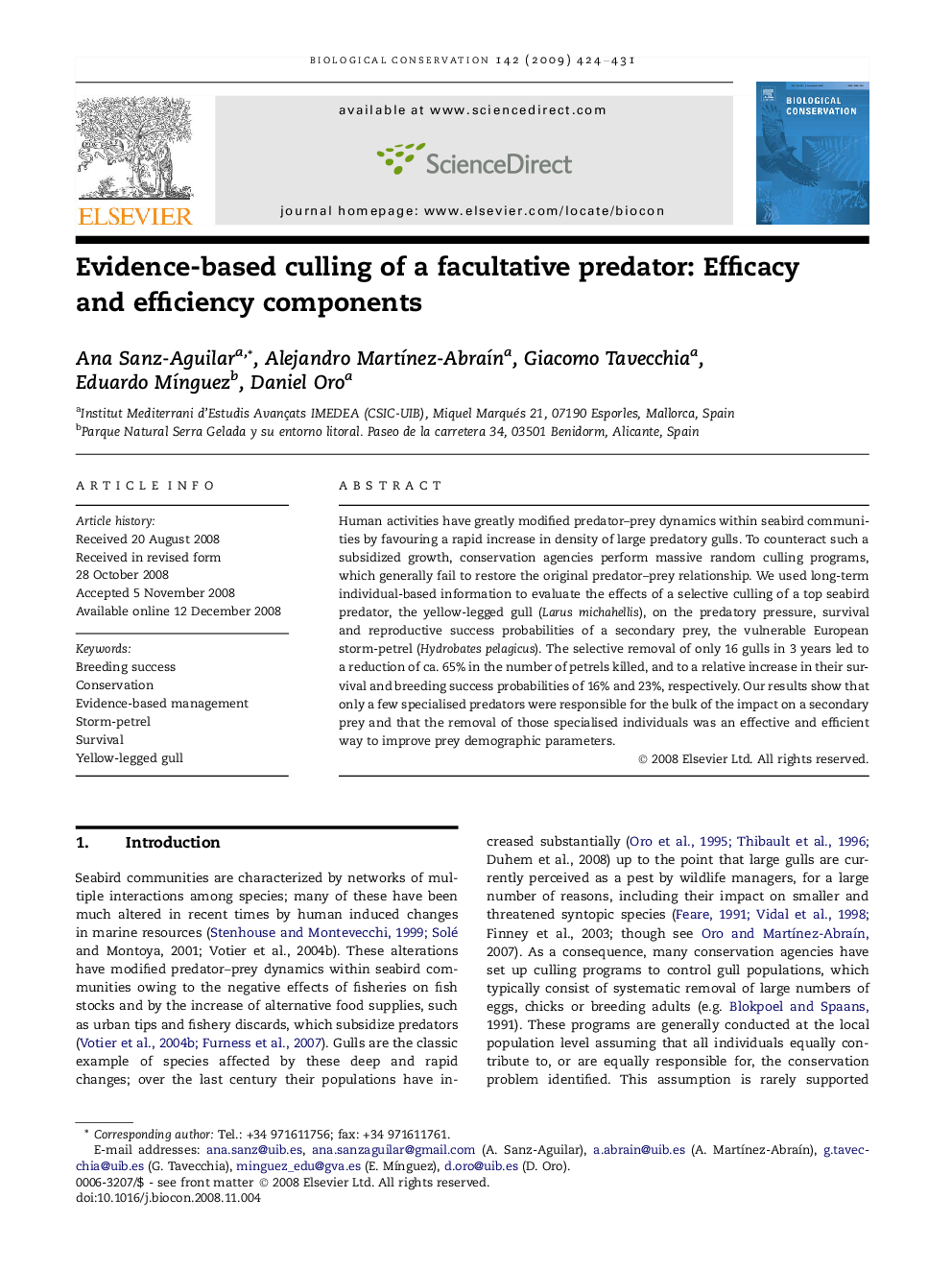| Article ID | Journal | Published Year | Pages | File Type |
|---|---|---|---|---|
| 4386591 | Biological Conservation | 2009 | 8 Pages |
Abstract
Human activities have greatly modified predator-prey dynamics within seabird communities by favouring a rapid increase in density of large predatory gulls. To counteract such a subsidized growth, conservation agencies perform massive random culling programs, which generally fail to restore the original predator-prey relationship. We used long-term individual-based information to evaluate the effects of a selective culling of a top seabird predator, the yellow-legged gull (Larus michahellis), on the predatory pressure, survival and reproductive success probabilities of a secondary prey, the vulnerable European storm-petrel (Hydrobates pelagicus). The selective removal of only 16 gulls in 3 years led to a reduction of ca. 65% in the number of petrels killed, and to a relative increase in their survival and breeding success probabilities of 16% and 23%, respectively. Our results show that only a few specialised predators were responsible for the bulk of the impact on a secondary prey and that the removal of those specialised individuals was an effective and efficient way to improve prey demographic parameters.
Related Topics
Life Sciences
Agricultural and Biological Sciences
Ecology, Evolution, Behavior and Systematics
Authors
Ana Sanz-Aguilar, Alejandro MartÃnez-AbraÃn, Giacomo Tavecchia, Eduardo MÃnguez, Daniel Oro,
